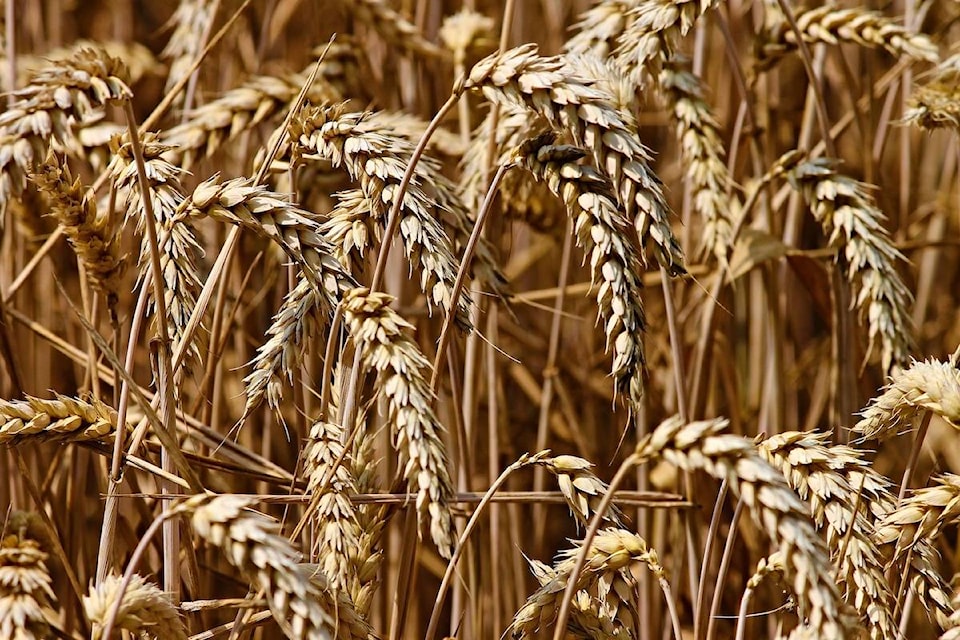Canadian scientists are at the heart of a breakthrough in wheat genetics that could revolutionize how the world’s most important crop can continue to feed a growing global population.
Andrew Sharpe and Curtis Pozniak of the University of Saskatchewan are key co-authors of a paper published Thursday in the journal Science that lays out the first complete and accurate map of the large and complex genome of wheat used for bread.
“This is the full, uninterrupted genome sequence,” said Sharpe, a molecular geneticist. “There’s always been the limitations of the technology, both the sequencing technology and the computational technology, to stitch everything together.”
The paper, a result of 13 years of work by the International Wheat Genome Sequencing Consortium, has 202 authors from 73 research agencies in 20 countries.
Wheat is on the cover of Science @sciencemagazine this week with the publication of the IWGSC reference sequence of the bread wheat genome https://t.co/5nMmrvBEn3 pic.twitter.com/we73nrAZPn
— wheatgenome (@wheatgenome) August 16, 2018
The research effort was so large because it needed to be. The wheat genome is five times the size of the human genetic code, which was mapped years ago.
Wheat is also different from other previously sequenced genomes. Its DNA contains long sections of repeated elements nested within each other.
“It’s a billion-piece jigsaw puzzle with 90 per cent blue sky and 10 per cent clouds,” Sharpe said. “You can imagine putting together a jigsaw puzzle of essentially the same thing.”
Consortium scientists had been proceeding chromosome by chromosome. Wheat has 21 of them and progress was slow and laborious, if accurate.
That’s when Sharpe and Pozniak had their insight.
Computing technology and methods for genetic analysis had evolved quickly over the last couple of years. Sharpe and Pozniak had worked with an Israeli company called NRGene to sequence another plant genome.
Why not try it with bread wheat?
“The chromosome by chromosome approach would have worked, but it’s very, very time-consuming,” said Pozniak, a wheat breeder. “There was a push within the whole wheat community to move toward the finish line a little more quickly.”
Related: Three steps forward, one step back
Related: ‘On life support:’ Research shows common pesticides starve, disorient birds
Within three months, the team had a framework sequence for the entire genome of a wheat variety called Chinese Spring. Combining that with data already generated allowed researchers to accurately place 107,891 genes and more than four million molecular markers, as well as identify how and when those genes become active.
Mapping the genome is expected to reduce the time it takes to develop new disease-resistant wheat strains by about one-third.
“The genome is a blueprint,” Pozniak said. ”Any time you have a blueprint, things are a lot easier.”
Understanding which genes are active at which time will allow breeders to predict how a new variety will perform in the field — even before the seed is in the ground.
That will help breeders develop wheat that does well in drought, saline soil, high humidity or other previously inhospitable climates.
“It’s a way to improve the efficiency of our plant-breeding programs and our selection process,” Pozniak said.
Wheat is the largest single food source on Earth, a staple for one-third of humanity. The world’s population is expected to reach nearly 10 billion by 2050 and food production will have to grow by 60 per cent.
That challenge must be met by environmentally sustainable means at a time when climate change is shifting the rules of agriculture everywhere on the planet.
Sharpe knows how important the wheat genome is. He can barely express how he felt when he saw the first results back from Israel and realized the approach was working.
“You end up with days that don’t go so well. An experiment doesn’t work or a machine breaks down.
“But that’s more than made up when you see something that comes out of the pipeline which meets your most optimistic estimations. It’s great when that happens.”
The Canadian Press
